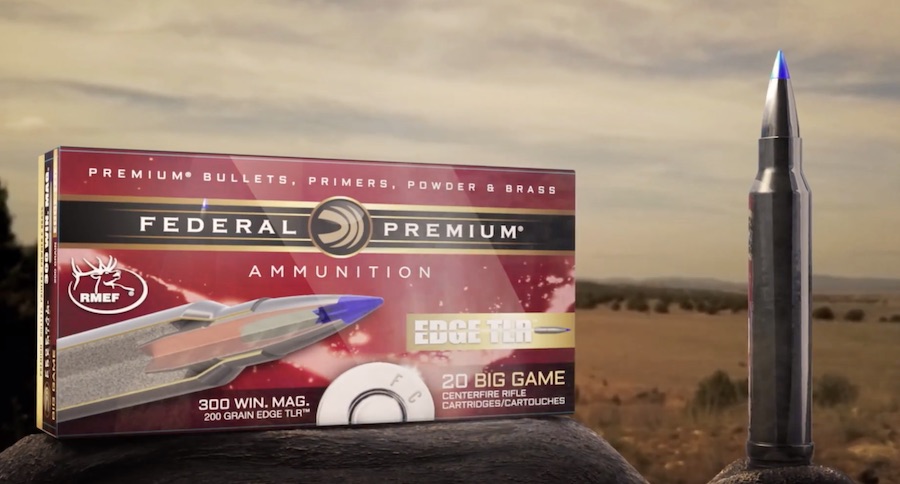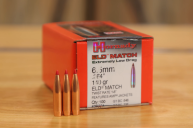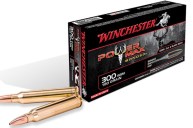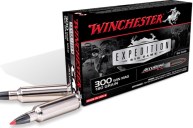The Federal Edge TLR line of ammunition is marketed to hunters as delivering both extreme accuracy and reliable terminal performance at all ranges.
The rising interest in longer range hunting has spurred the development of rifle, optic, and ammunition product lines designed for that sort of work. The Federal Edge TLR line of hunting ammunition is one of the products that has emerged in recent years to fulfill that need.
In order to be suitable for longer range hunting, ammunition must do several things well.
First, it must be accurate enough for the shooter to consistently hit the vital zone on the intended species of game at the desired range.
Second, the bullet must have a flat enough trajectory that it's capable of hitting game with either a reasonable amount of holdover or without running out of adjustment in the scope being used. Basically, this means using a very aerodynamic bullet fired from a relatively flat shooting cartridge (like the .300 Win Mag or 7mm Rem Mag). These bullets will also have less wind drift.
Finally, the ammunition must have acceptable terminal performance in order to ethically harvest game at reasonable hunting ranges. Essentially, this requirement necessitates a bullet that will still reliably expand at the lower velocities common at longer range without expanding too rapidly and coming apart when taking a shot at short range (and therefore with a much higher impact velocity).
Believe it or not, the first two criteria are the more difficult boxes to check. After all, many companies have been constructing match grade ammunition for years that's both extremely accurate and aerodynamic.
However, punching paper or banging steel at extreme range is a very different task from taking shots on game at longer range.
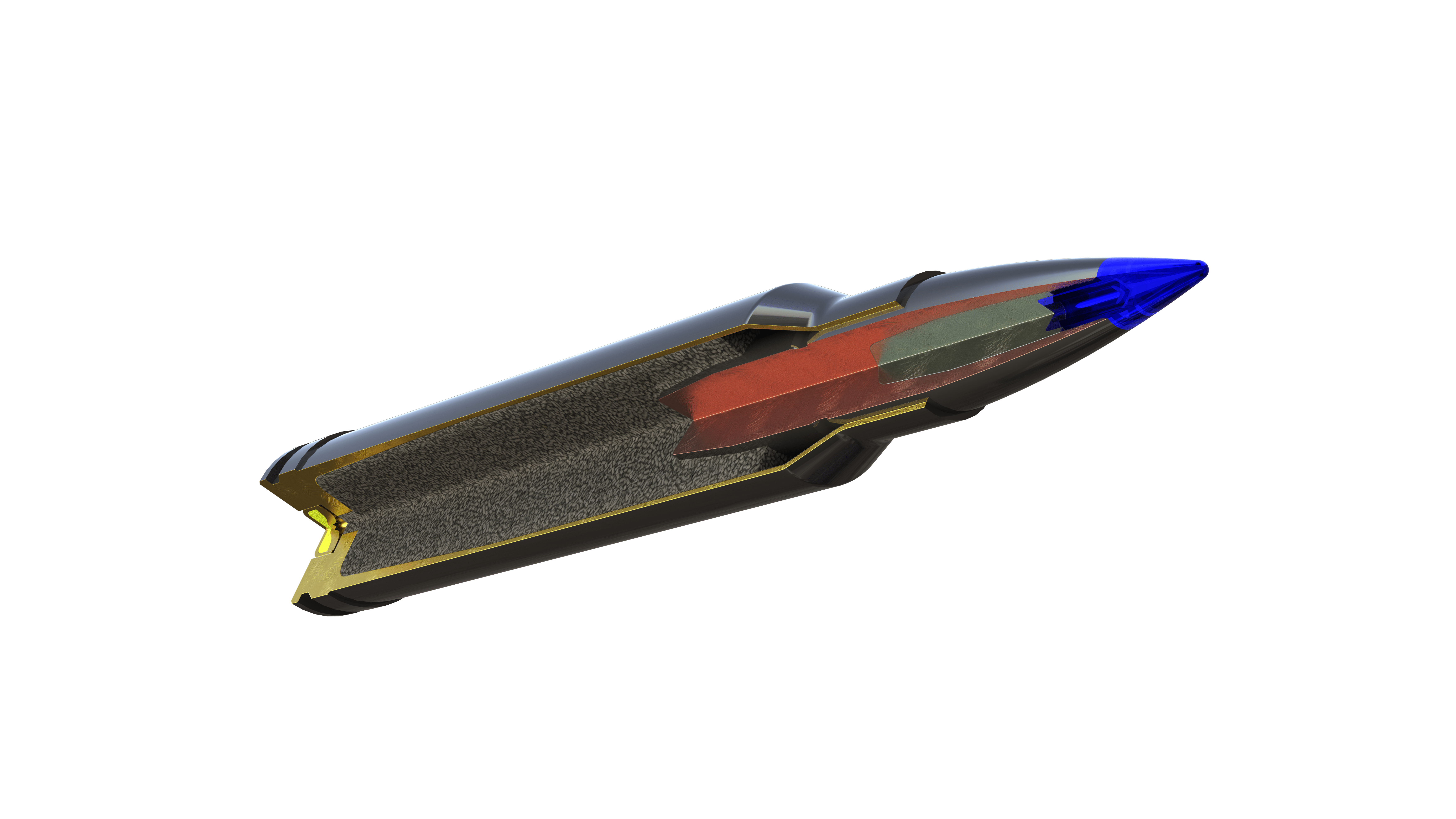
First, they advertise match-grade long-range accuracy and emphasize the fact that the boat tail Edge TLR bullet has a sleek profile with a high ballistic coefficient. These bullets also have what Federal calls an AccuChannel groove to help improve accuracy and reduce drag (and pressure) while the bullet is traveling down the rifle barrel.
Second, these bullets use Federal's exclusive Slipstream polymer tip. This tip helps improve the ballistic coefficient of the bullet, but also has a couple of other benefits.
When polymer tipped bullets are fired at a very high velocity, the heat generated by atmospheric friction can erode the polymer tip. This results in changes to ballistic coefficient of the bullet and degrades accuracy. Federal advertises that the Slipstream tip (like the Heat Shield tip Hornady uses on their ELD Match and ELD-X bullets) is more heat-resistant than typical polymer tips and isn't as susceptible to deformation.
Additionally, Federal also touts the fact that the Slipstream tip has a hollow core design that helps initiate expansion at very low impact velocities.
How low of a velocity will these bullets still perform as designed?
The exact velocity varies depending on the cartridge, but Federal advertises that these bullets will expand at velocities 200 fps lower than comparable bullets made by other companies. In some cases, this means that it might be possible to see good expansion with impact velocities in the 1,350-1,400 fps range.
While the Slipstream tip is designed to help initiate expansion, especially at longer ranges, the Federal Edge TLR bullet also uses a copper shank and a bonded lead core to prevent the bullet from expanding too rapidly or coming apart at a high impact velocity.
Federal has a lot of experience in this area with their highly regarded Trophy Bonded Tip and Trophy Bonded Bear Claw bullets.
Especially when hunting larger animals like moose and elk, consistent expansion and deep, straight line penetration are also very important. When the bullet needs to travel a long distance through the animal to reach the vitals, you absolutely do not want a bullet that will tumble or deflect off course.
If that happens, it's possible a bullet that is placed in the right spot will miss the vitals of the animal.
Several different factors can cause this to occur, but it's more likely with a bullet that does not expand uniformly like the one in the photo below.
To that end, Federal advertises that the Edge TLR bullets have an externally skived nose. Combined with the bullet's copper shank and bonded lead core, the skived nose helps initiate expansion in a manner that results in consistent opening of the nose for a uniform frontal surface.
Federal claims that these bullets will expand within the first 2" of penetration and will exhibit high weight retention, uniform controlled expansion, and reliable straight line deep penetration.
The result is lethal penetration across a wide range of impact velocities.
Federal Edge TLR ammo is currently manufactured in .270 Winchester, 270 WSM, .308 Winchester, .30-06 Springfield, .300 Winchester Magnum, 300 WSM, and 7mm Remington Magnum.
This is only available as centerfire rifle ammunition and there are no plans for Federal to offer the Edge TLR in handgun or rimfire ammunition. However, if you enjoy reloading, you're in luck because the Edge TLR bullet is also available as component bullets for use by handloaders.
While the Edge TLR does have a copper shank, it contains lead, so it's not permitted for hunting in California. If you need lead free ammunition for long range hunting, consider using a bullet like the the LRX from Barnes.
Other than that one caveat, if you want some quality hunting bullets that will provide consistent performance after both a low-velocity impact at long range and a high-velocity impact at close range on a wide variety of game, then look into the Federal Edge TLR rifle ammunition.
Like what you see? You can read more great articles by John McAdams on the Big Game Hunting Blog. Follow him on Facebook & YouTube and subscribe to his show: the Big Game Hunting Podcast.
NEXT: EVERYTHING YOU NEED TO KNOW ABOUT HORNADY LEVEREVOLUTION AMMO
WATCH
